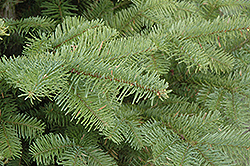Fri & Sat 8am - 8pm
Sun 8am - 7pm
Anytown, USA 12345
fax: 261.787.0463
e-mail: info@successgc.com


Plant Finder

Height: 90 feet
Spread: 20 feet
Sunlight:
![]()
Hardiness Zone: 8a
Other Names: Red Fir, White Fir
Description:
A large and beautiful evergreen tree with long sweeping branches and stunning blue-green dense foliage that has a silvery hue; bark on young trees is grey and smooth but becomes red-brown, rough and fissured with age; closely related to red fir
Ornamental Features
Noble Fir is primarily valued in the landscape for its distinctively pyramidal habit of growth. It has attractive steel blue foliage edged in white. The needles are highly ornamental and remain steel blue throughout the winter.
Landscape Attributes
Noble Fir is an evergreen tree with a strong central leader and a distinctive and refined pyramidal form. Its average texture blends into the landscape, but can be balanced by one or two finer or coarser trees or shrubs for an effective composition.
This is a relatively low maintenance tree, and usually looks its best without pruning, although it will tolerate pruning. It has no significant negative characteristics.
Noble Fir is recommended for the following landscape applications;
- Accent
- Vertical Accent
Planting & Growing
Noble Fir will grow to be about 90 feet tall at maturity, with a spread of 20 feet. It has a low canopy, and should not be planted underneath power lines. It grows at a slow rate, and under ideal conditions can be expected to live for 70 years or more.
This tree should only be grown in full sunlight. It prefers to grow in average to moist conditions, and shouldn't be allowed to dry out. It is not particular as to soil pH, but grows best in sandy soils. It is quite intolerant of urban pollution, therefore inner city or urban streetside plantings are best avoided, and will benefit from being planted in a relatively sheltered location. Consider applying a thick mulch around the root zone in winter to protect it in exposed locations or colder microclimates. This species is native to parts of North America.
